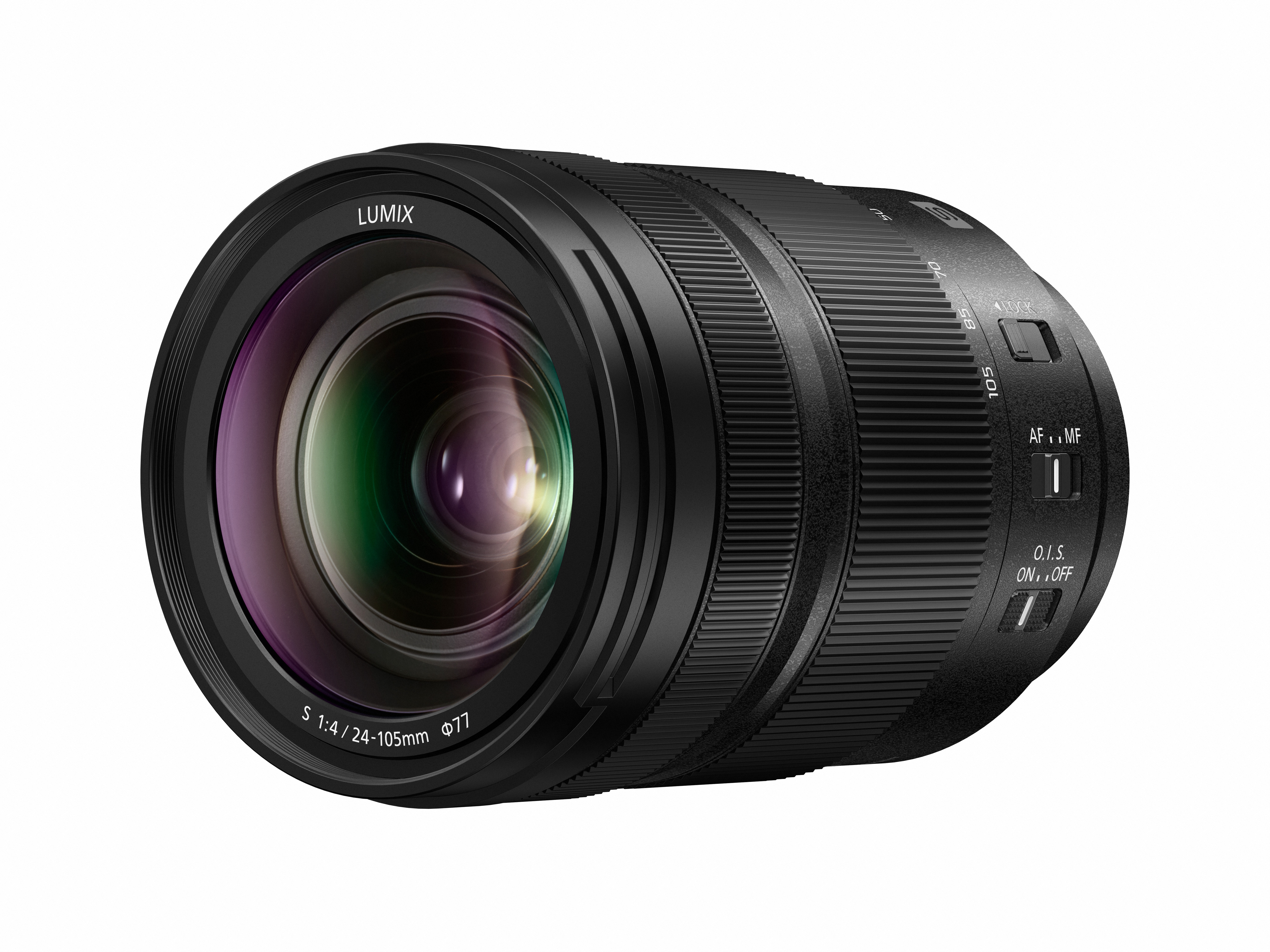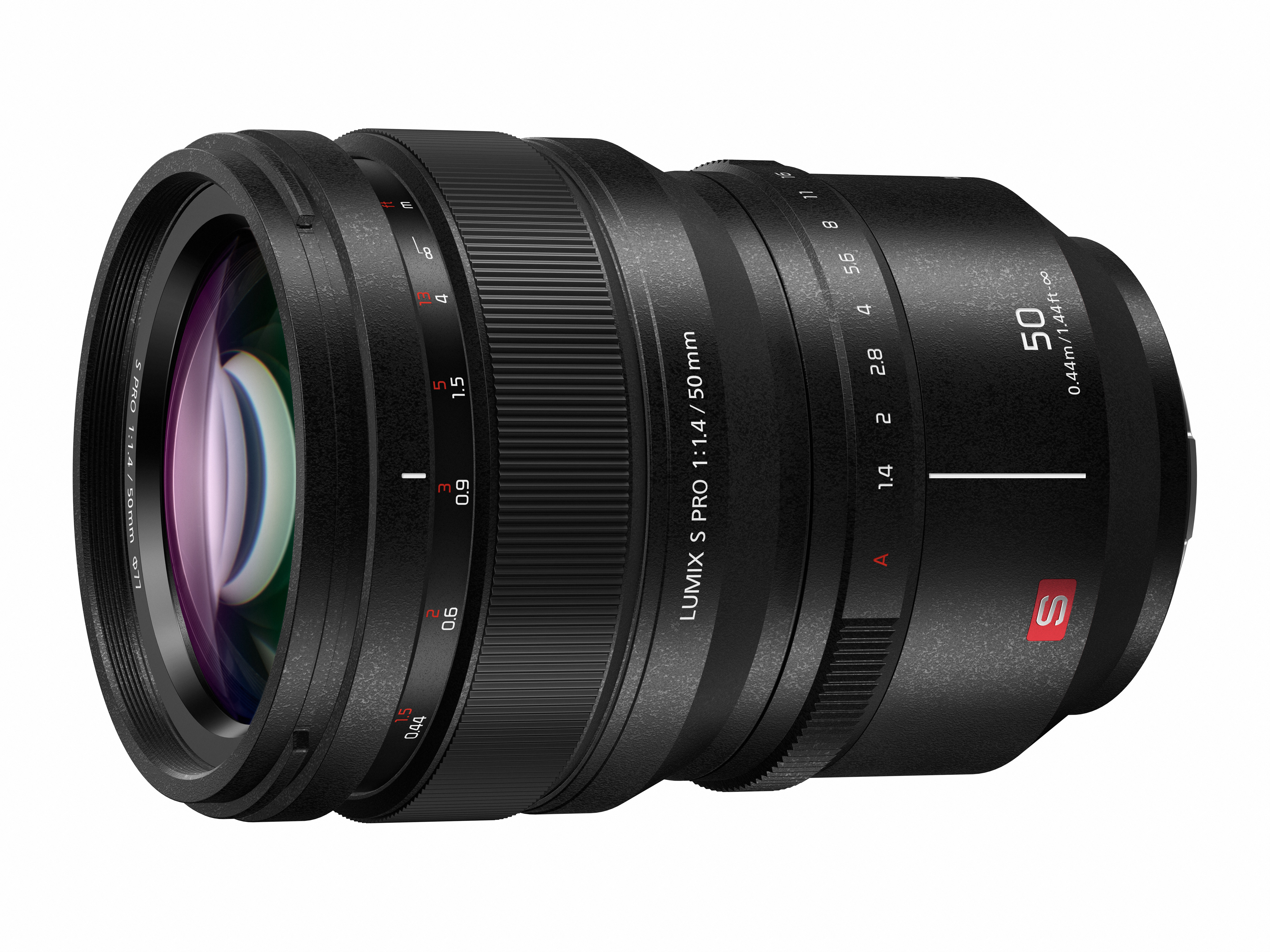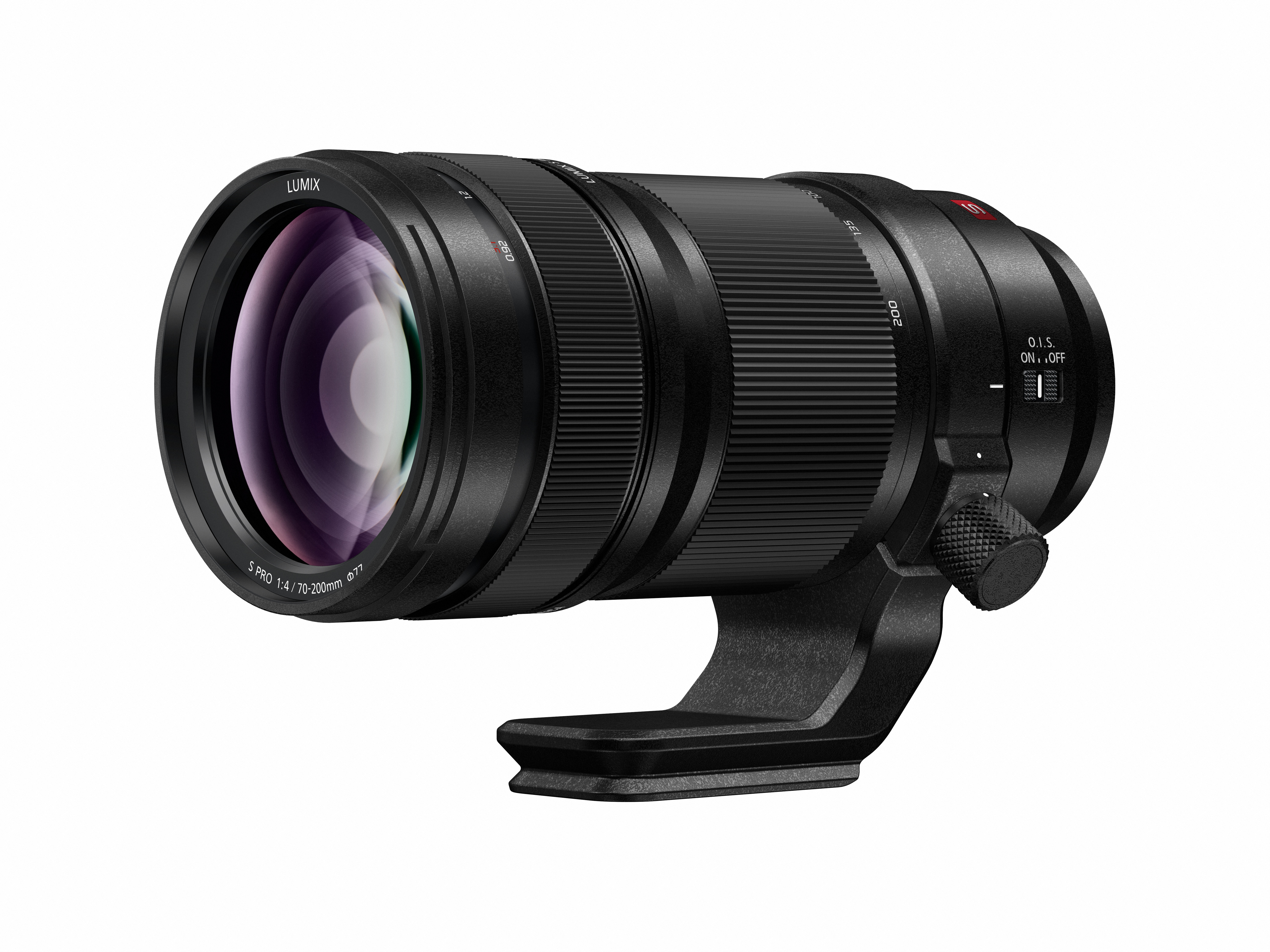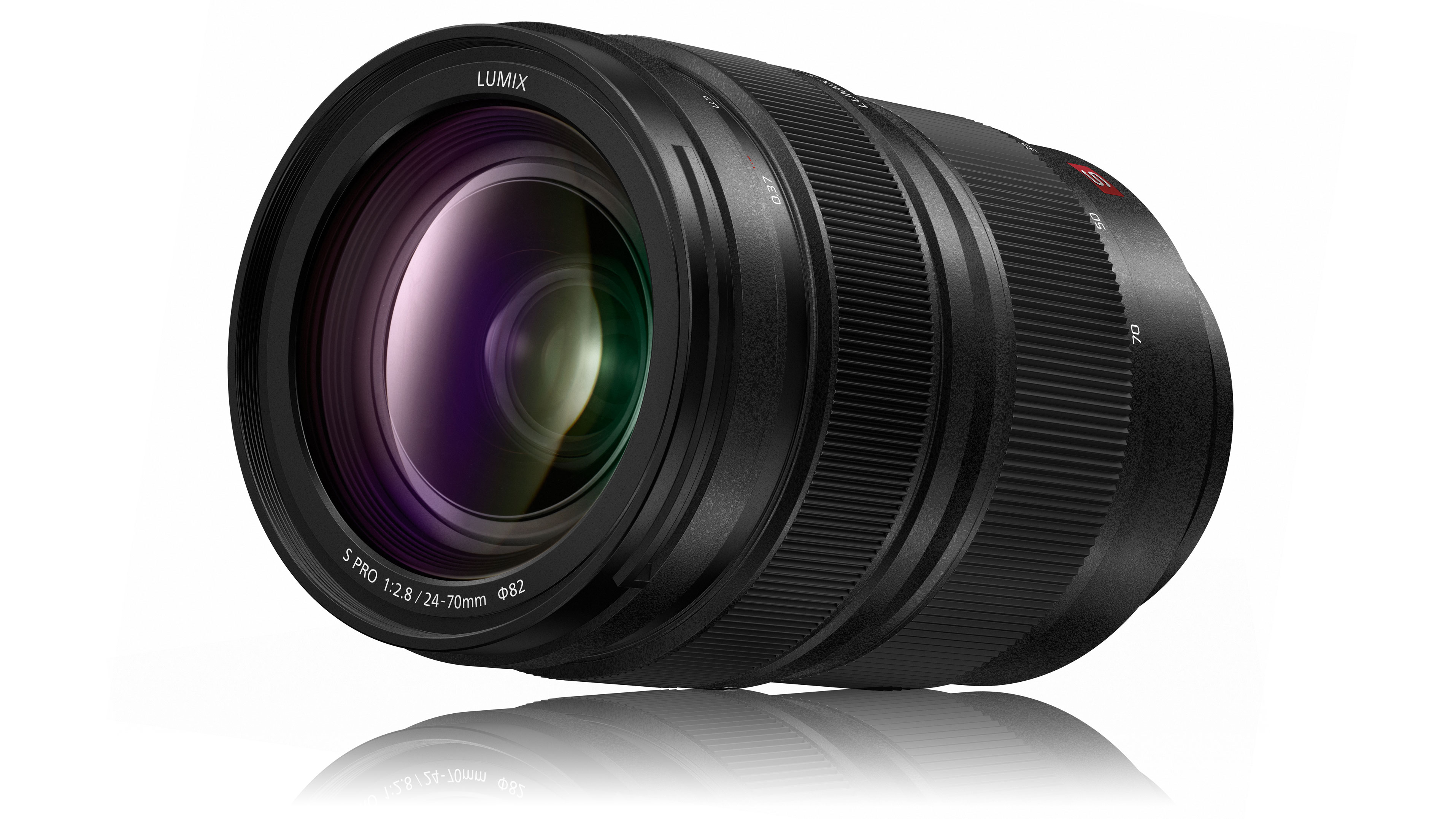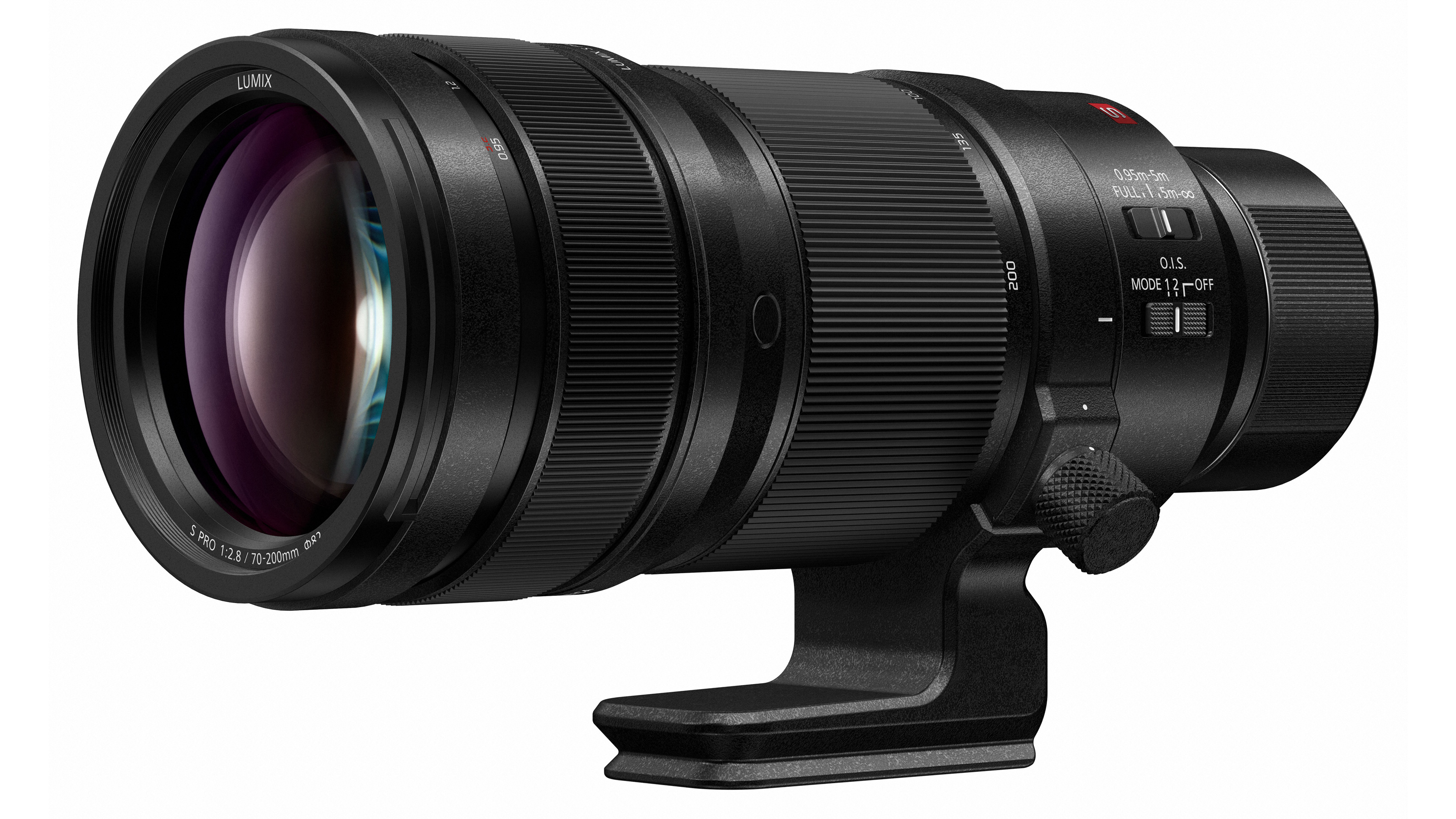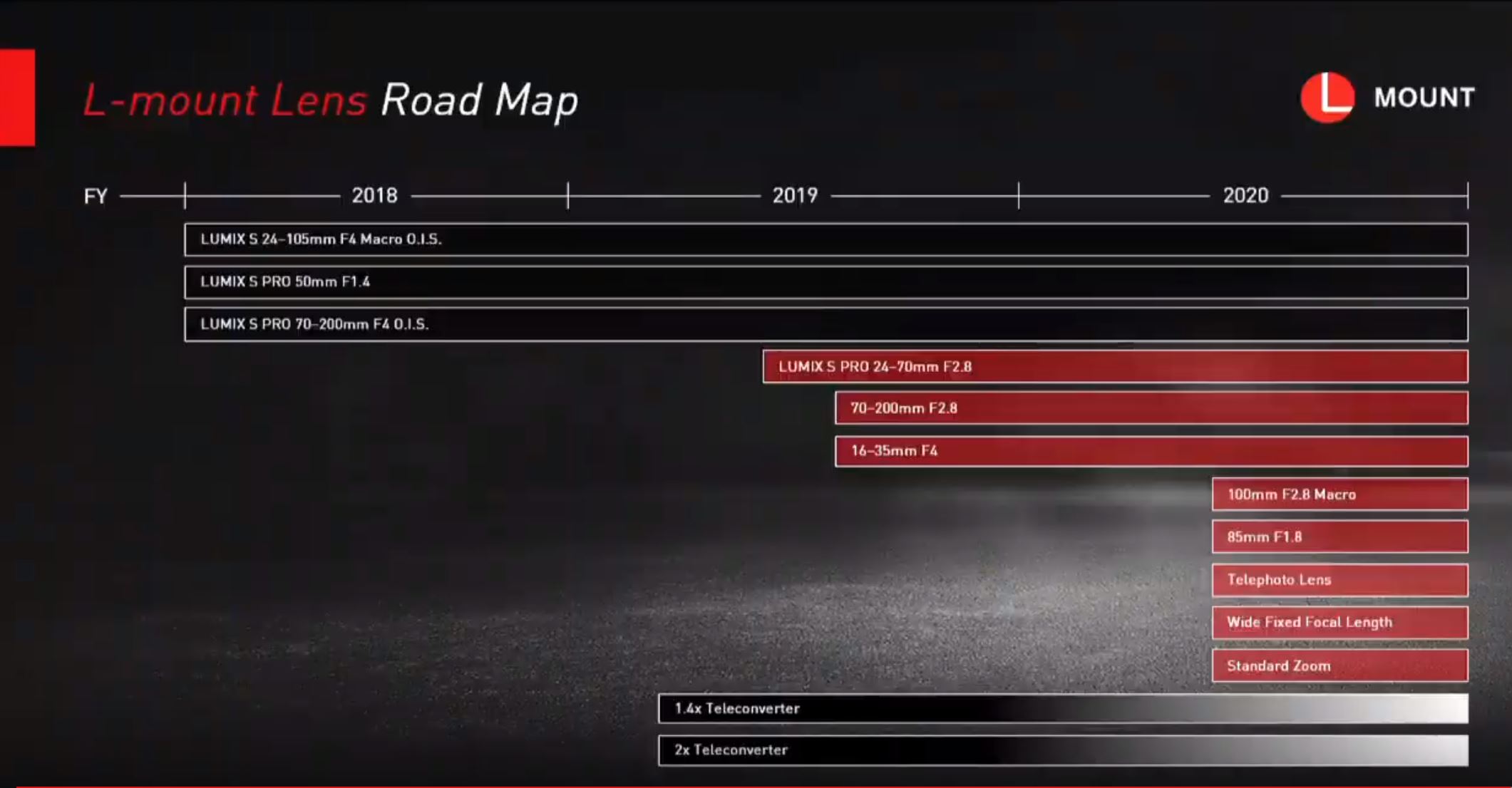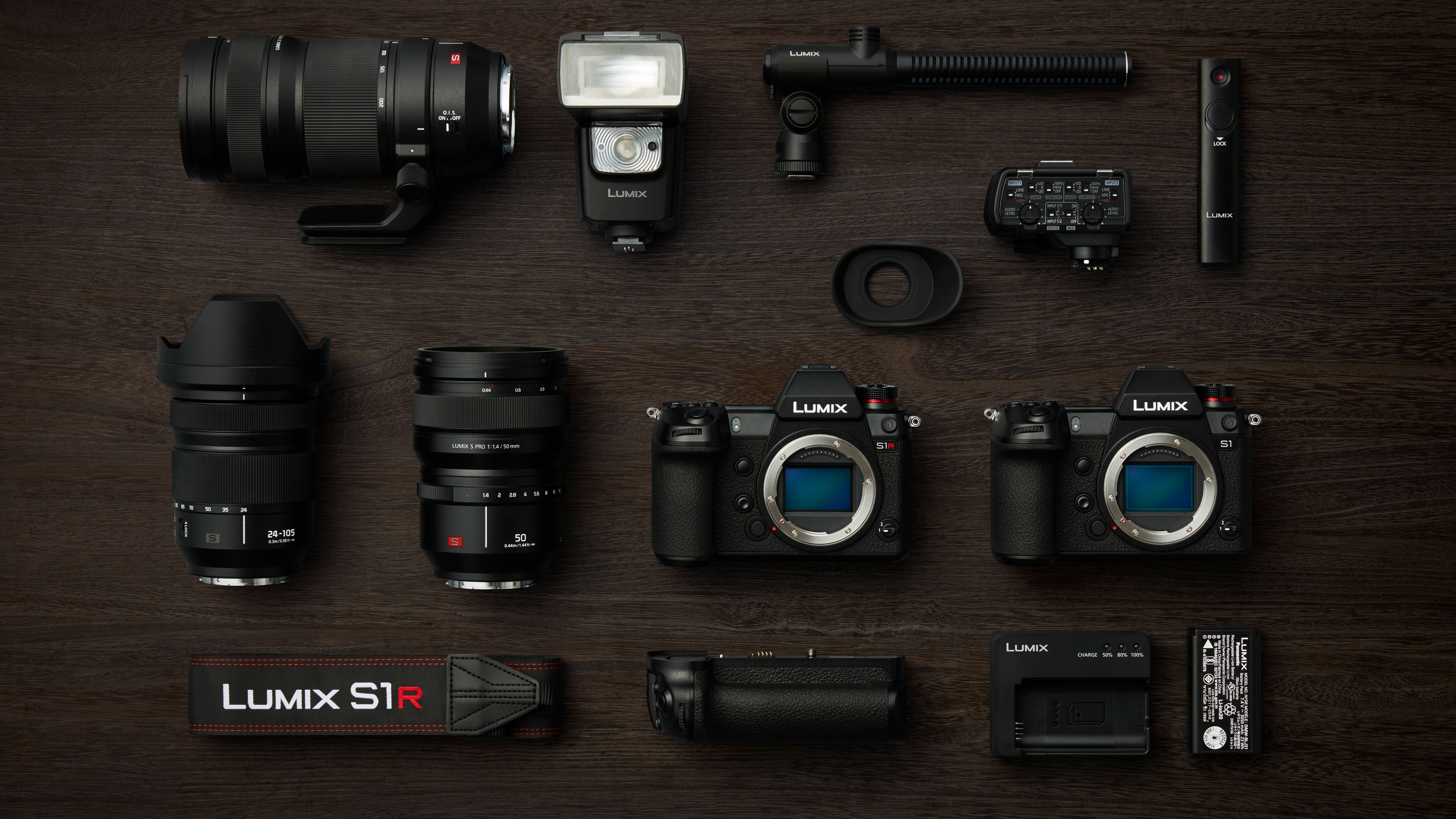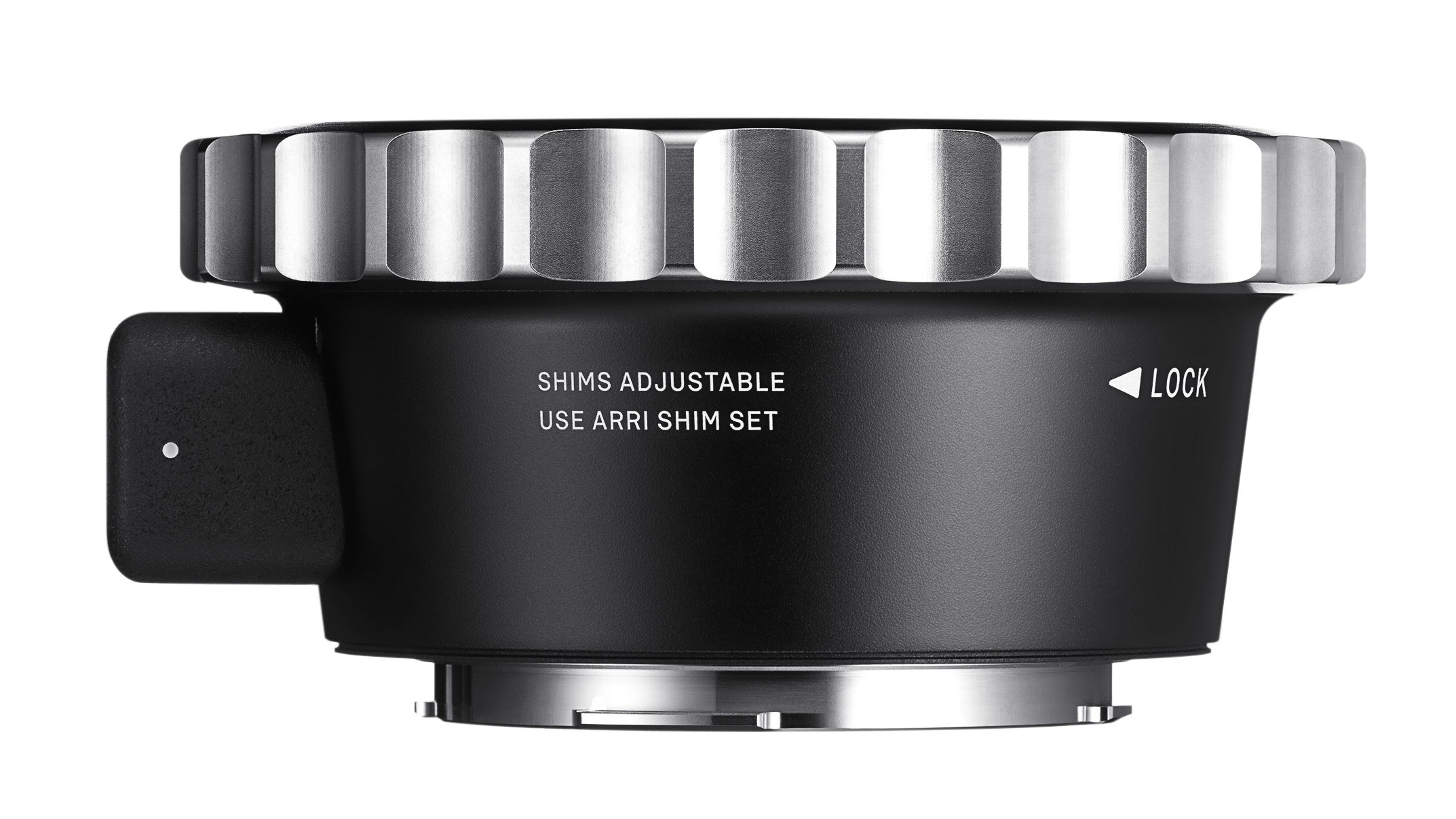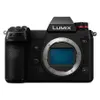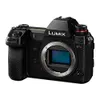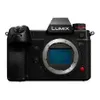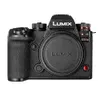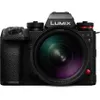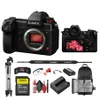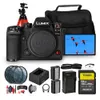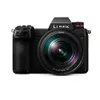L-mount lens roadmap: Panasonic promises 42 lenses by the end of 2020
Panasonic could be challenging Sony for full-frame lens choice within two years according to the L-mount lens roadmap
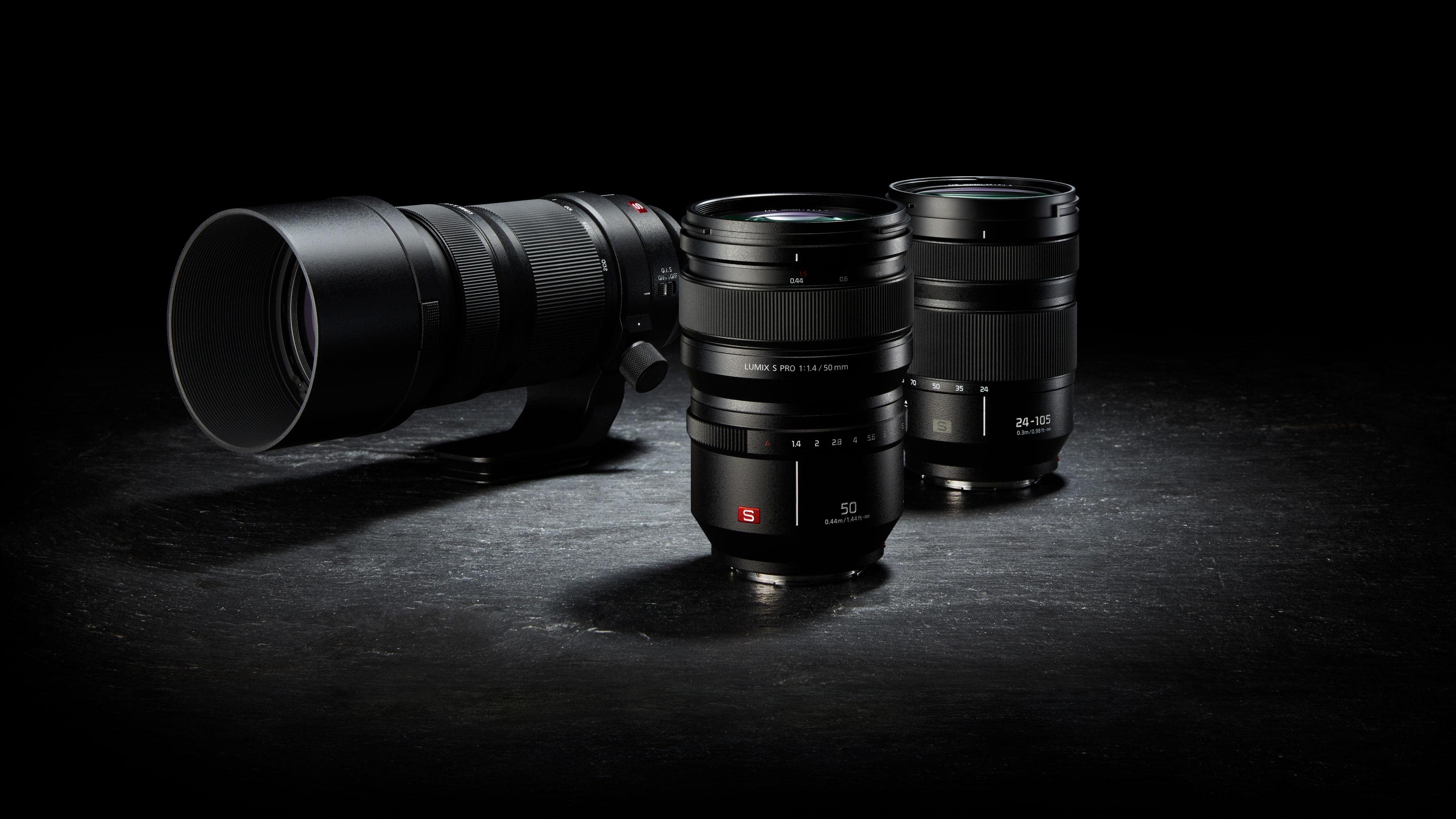
At the global launch of the Panasonic Lumix S1 and Lumix S1R full-frame earlier this year, Panasonic also revealed its plans for its new full frame mirrorless camera system in a fast-moving big-screen presentation. And in a blink-and-you’ll-miss-it-moment it showed a slide which revealed not only its own plans for native Lumix S lenses but also those of Leica and Sigma.
• Read more: Best L-mount lenses
Since then Panasonic has launched a third camera in the line-up – the Panasonic Lumix S1H, which is aimed at cinematographers.
Leica already has its own full-frame mirrorless camera in the original SL and more-recent SL2, and Sigma has announced its super-small Sigma fp full-frame camera that will use the triumvirate parnership's mount. But what lenses can be used with these five cameras?
Six Lumix S lenses are available right now (plus two teleconverters), with three more promised for 2020, these are:
Lumix S 24-105mm f/4 MACRO OIS
This is the standard kit zoom, which is the lens most often bundled with the Lumix S1 or SR. The lens has a substantial feel, and is a good match for these chunky full-frame mirrorless cameras.
The best camera deals, reviews, product advice, and unmissable photography news, direct to your inbox!
Lumix S PRO 50mm f/1.4
This is the first in the Lumix S Pro series, and boasts an 11-bladed iris for “exceptional” bokeh. Weighing 955g, Panasonic claims it has “outstanding” sharpness across the frame. There is no optical image stabilizer (OIS) in this model, but the cameras have in-body stabilization.
Lumix S PRO 70-200mm f/4 OIS
This is the first telephoto in the range, with an f/4 constant aperture and built-in stabilization. With its tripod foot, and its substantial build this feels more like a 70-200mm f/2.8.
Lumix S PRO 24-70mm F2.8
Considered the standard zoom by many pro photographers, the pricing and availablity for this lens was announced with the full specification of the Panasonic S1H. It is dust and splash resistant, and offers both linear and stepping motors for speed and precistion, with a clutch mechanism for switching from AF to manual.
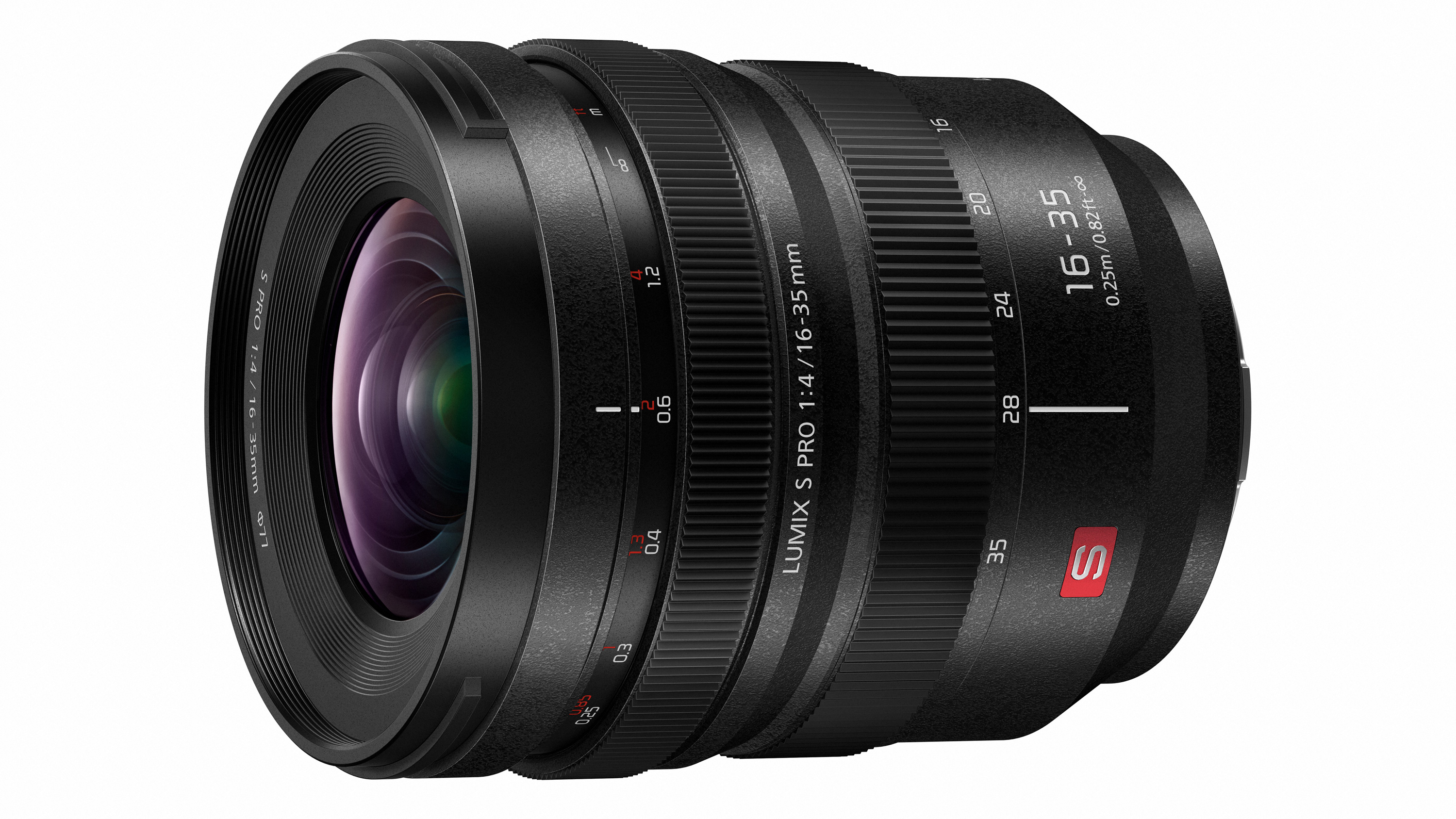
Lumix S PRO 16-35mm f4
Panasonic's first wide-angle lens for the system is a zoom, giving you an all-round lens for interiors and documentary shooting. Weighing 500g, it is constructed of 12 elements in 9 groups.
Lumix S PRO 70-200mm f2.8
The must-have lens in any pro's kit bag, this fast telephoto lens is the go-to lens for everything from portraiture to sports photography. It weighs in a 1590g and has its own tripod collar.
Lumix S PRO 1.4x and 2x teleconverters
Panasonic has also announced both a DMW-STC14 1.4x teleconverter and a DMW-STC20 2x teleconverter for the L-mount system – which went on sale last June for use with the 70-200mm f/4, and the 70-200mm f/2.8.
These lenses cover some of the basics, but this still leaves lots of gaps. Five new additions to the L-mount lens range are promised by Panasonic for 2020. These are:
• 100mm f/2.8 macro
• 85mm f/1.8 portrait lens
• another, as yet unspecified, telephoto lens
• its first wide-angle prime lens
• an additional standard zoom.
The Panasonic roadmap is only part of the story, of course, because Leica and Sigma are producing L-Mount lenses too.
Leica lenses are out there already
The first revelation was that there will be no fewer than 18 L-Mount lenses from Leica by the end of 2020. Leica already makes 8 L-Mount lenses for its Leica SL camera, which also uses the Leica L-Mount, which cover popular zoom and prime focal lengths (albeit at considerable cost!).
Leica L-mount lenses announced or launched so far are:
Super-Vario-Elmar-SL16–35 f/3.5–4.5 ASPH
Vario-Elmarit-SL 24–90 f/2.8–4 ASPH
APO-Summicron-SL 35 f/2 ASPH
Summicron-SL 50 f/1.4 ASPH
APO-Summicron-SL 50 f/2 ASPH
APO-Summicron-SL 75 f/2 ASPH
APO-Summicron-SL 90 f/2 ASPH
APO Vario-Elmarit-SL 90–280 f/2.8–4
Leica also make adaptors to allow its own R-mount, M-mount and S-mount lenses to be used on L-mount cameras. Additionally, it has an adaptor for using Arri PL-mount cine lenses.
But that still leaves ten Leica lenses to come by the end of next year. We do know that 35mm f/2 and 50mm f/2 Summicron lenses are coming in 2019.
21mm f/2, 24mm f/2 and 28mm f/2 Summicron lenses are scheduled for 2020.
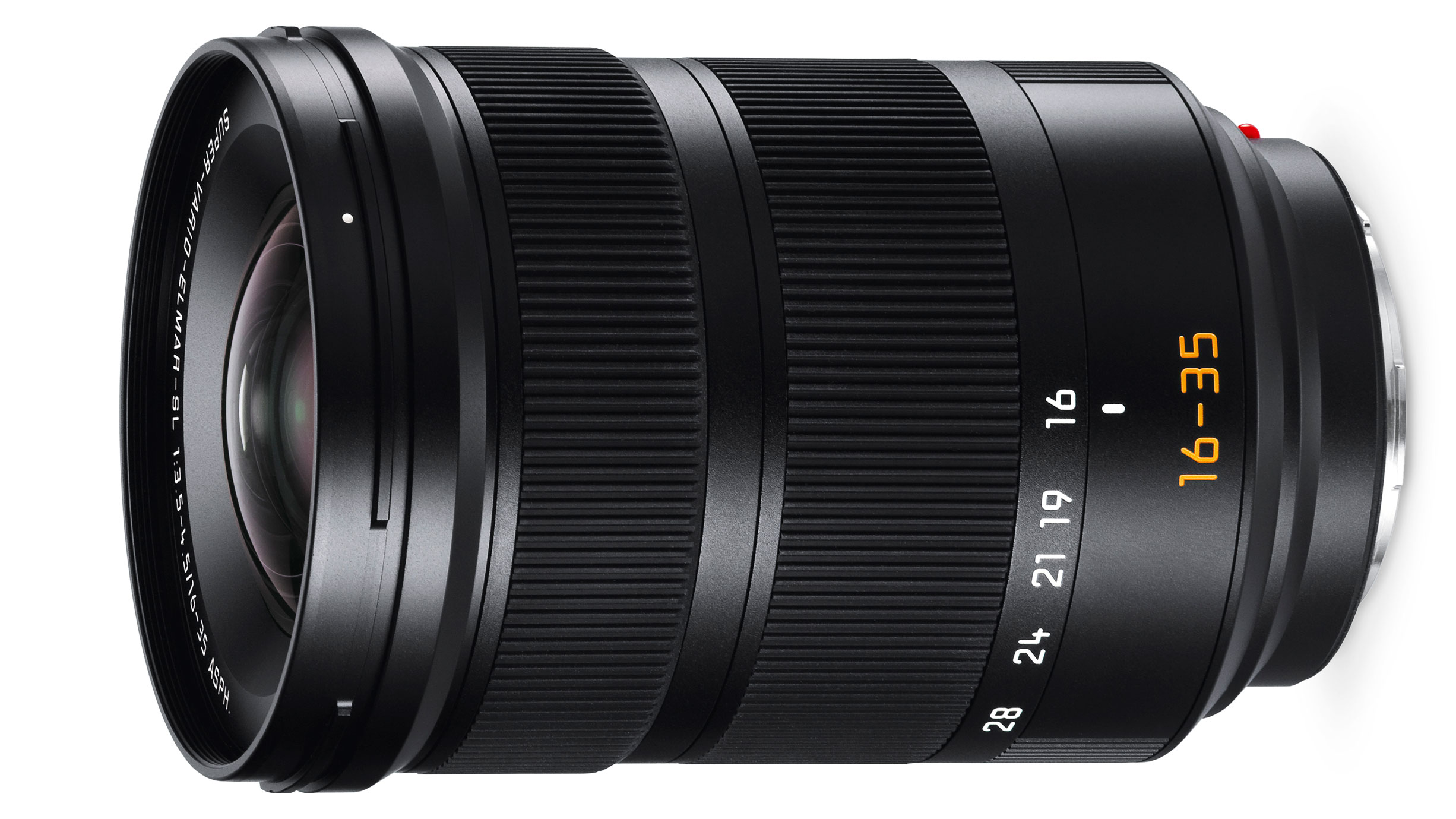
Sigma L-mount lenses
Leica lenses are traditionally fearsomely expensive, so these new Leica optics may be of interest only to high-end users and demanding professionals, but at the other end of the scale Sigma has built its business on making high-quality lenses at much lower prices than own-brand equivalents, so the news that there will be 14 L-Mount Sigma lenses by the end of 2020 was even more exciting.
These are the same 14 lenses which have already been adapted for the Sony FE mount and include wide-aperture primes from 14mm to 135mm.
They has also the Sigma 14-24mm F2.8 DG DN Art in the L-mount - which was the first proper wide-angle zoom for the system. The Sigma 24-70mm f/2.8 AF DG DN Art has also now been introduced, which provides a more affordable version of what is a professional photographer's standard zoom.
The first 14 of these lenses will be (with anticipated shipping date, and indicative pricing):
- Sigma 14-24mm F2.8 DG DN Art (August 2019 – $1,399.00)
- Sigma 14mm F1.8 DG HSM Art (2020 – $1,599.00)
- Sigma 20mm F1.4 DG HSM Art (October 2019 – $899.00)
- Sigma 24mm F1.4 DG HSM Art (October 2019 – $849.00)
- Sigma 28mm F1.4 DG HSM Art (December 2019 – $1,399.00)
- Sigma 35mm F1.2 DG DN Art (July 2019 – $1,499.00)
- Sigma 35mm F1.4 DG HSM Art (September 2019 – $899.00)
- Sigma 40mm F1.4 DG HSM Art (December 2019 – $1,399.00)
- Sigma 50mm F1.4 DG HSM Art (September 2019 – $949.00)
- Sigma 70mm F2.8 DG Macro Art (2020 – $569.00)
- Sigma 85mm F1.4 DG HSM Art (September 2019 – $1,199.00)
- Sigma 105mm F1.4 DG HSM Art (December 2019 – $1,599.00)
- Sigma 135mm F1.8 DG HSM Art (October 2019 – $1,399.00)
- Sigma 45mm F2.8 DG DN Contemporary (July 2019 – $549)
Sigma MC-21 mount adaptors
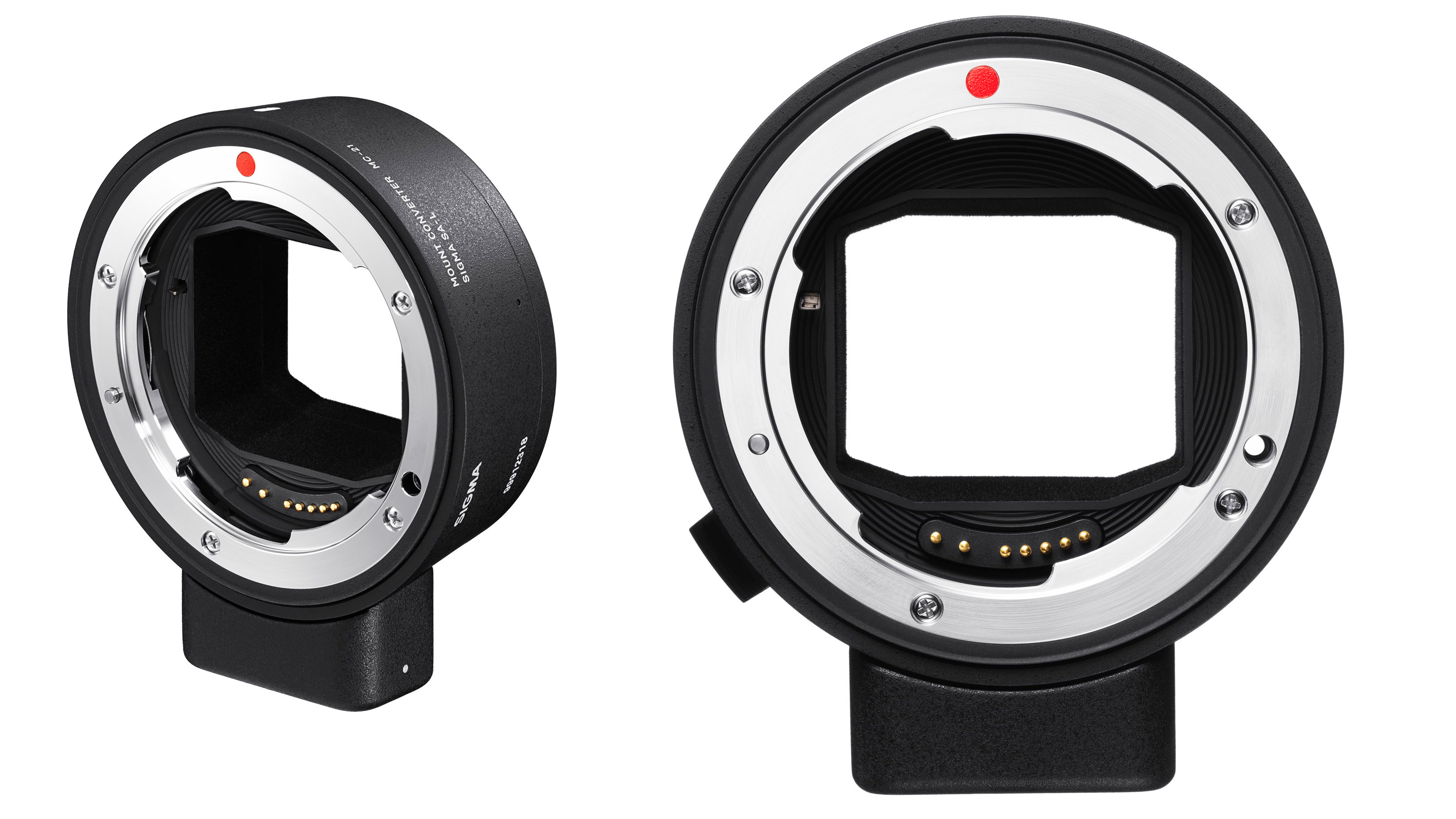
Sigma will also be making two mount adaptors, allowing Canon EF and Sigma SA mount lenses to be used on Panasonic Lumix S1, Lumix S1R and Lumix S1H bodies, as well as on the Leica SL2 and Leica SL, and the Sigma fp.
The Sigma MC-21 SA-L-mount converter promises the ability of being able to use a further 29 of Sigma's existing primes and zooms. The full list of these are:
12-24mm F4 DG HSM Art
14-24mm F2.8 DG HSM Art
24-35mm F2 DG HSM Art
24-70mm F2.8 DG OS HSM Art
24-105mm F4 DG OS HSM Art
60-600mm F4.5-6.3 DG OS HSM Sports
70-200mm F2.8 DG OS HSM Sports
100-400mm F5-6.3 DG OS HSM Contemporary
120-300mm F2.8 DG OS HSM Sports
150-600mm F5-6.3 DG OS HSM Sports
150-600mm F5-6.3 DG OS HSM Contemporary
14mm F1.8 DG HSM Art
20mm F1.4 DG HSM Art
24mm F1.4 DG HSM Art
28mm F1.4 DG HSM Art
35mm F1.4 DG HSM Art
40mm F1.4 DG HSM Art
50mm F1.4 DG HSM Art
70mm F2.8 DG MACRO Art
85mm F1.4 DG HSM Art
105mm F1.4 DG HSM Art
135mm F1.8 DG HSM Art
500mm F4 DG OS HSM Sports
17-70mm F2.8-4 DC MACRO OS HSM Contemporary (APS-C)
18-35mm F1.8 DC HSM Art (APS-C)
18-200mm F3.5-6.3 DC MACRO OS HSM Contemporary (APS-C)
18-300mm F3.5-6.3 DC MACRO OS HSM Contemporary (APS-C)
50-100mm F1.8 DC HSM Art (APS-C)
30mm F1.4 DC HSM Art (APS-C)
Sigma MC-31 mount
The Sigma MC-31 mount converter has been developed to allow users to use cine lenses with the industry-standard Arri PL-mount on L-mount cameras. The mount, which has its own distinctive locking collar, is used by all cinema lens manufacturers including Cooke, Angenieux, Schneider, Xeen, and Sigma.
L-mount alliance
Panasonic, Sigma and Leica are of course the three companies that make up the L-Mount alliance announced at Photokina 2018. Hopefully, we will now see the number of L-Mount lenses grow quickly.
This is essential if Panasonic is to make a serious dent in the full frame mirrorless camera market with its Lumix S1, Lumix S1R and the 6K Lumix S1H.
Sony already has a big lead in its native lens range, but Nikon and Canon are still in the early stages of populating their full frame mirrorless lens ranges – so if Panasonic is going to strike, now’s the time to do it!
Read more:
• Best L-mount lenses for Panasonic, Leica and Sigma mirrorless cameras
• Best mirrorless cameras
• Best full-frame DSLRs
• Best Panasonic cameras
Lumix S PRO 16-35mm f4
Panasonic's first wide-angle lens for the system is a zoom, giving you an all-round lens for interiors and documentary shooting. Weighing 500g, it is constructed of 12 elements in 9 groups.

Rod is an independent photography journalist and editor, and a long-standing Digital Camera World contributor, having previously worked as DCW's Group Reviews editor. Before that he has been technique editor on N-Photo, Head of Testing for the photography division and Camera Channel editor on TechRadar, as well as contributing to many other publications. He has been writing about photography technique, photo editing and digital cameras since they first appeared, and before that began his career writing about film photography. He has used and reviewed practically every interchangeable lens camera launched in the past 20 years, from entry-level DSLRs to medium format cameras, together with lenses, tripods, gimbals, light meters, camera bags and more. Rod has his own camera gear blog at fotovolo.com but also writes about photo-editing applications and techniques at lifeafterphotoshop.com
